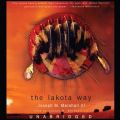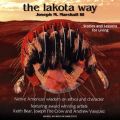 The Redemption of Black Elk: An Ancient Path to Inner Strength Following the Footprints of the Lakota Holy Man
The Redemption of Black Elk: An Ancient Path to Inner Strength Following the Footprints of the Lakota Holy Man
Автор: Linda L. Stampoulos
Год издания:
As a young child of the Oglala Lakota Sioux, Black Elk had been given a mighty vision which would lead him on a personal journey that lasted his entire life. Although Black Elk’s vision was a prophetic message telling the terrible future of his tribe, it also held positive aspects that must be reclaimed. It is through this reclamation that the guiding beacons given to him reveal an ancient pathway woven into the images of the West. By exploring Black Elk’s eyewitness account of the crucial events of that time, the author discovered a series of metaphorical footprints that show us the way toward inner strength and a balanced life…125 years later. To help with an interpretation of Black Elk’s account, the author invoked the insight of Joseph Campbell, one of the world’s foremost authorities on societal ideologies. Through his understanding of symbol and metaphor Campbell was able to examine the metaphorical footprints and provide us with a twenty-first century “spin” that a simple man generations before could only imagine. This book offers a new look at Black Elk’s footprints and together with the insight of Joseph Campbell, presents an inward path to the positive forces within each of us, waiting for discovery. About the Author: Linda L. Stampoulos lives in New Jersey, and often travels to the West to research material her books. After completing her Undergraduate and Graduate Degrees at Montclair State University, she went on to Columbia University, to earn her Doctorate in Education. She has taught at both the Undergraduate and Graduate levels in the Schools of Health Foundations and Educational Foundations at Montclair State University. A large portion of her curriculum included the works of Joseph Campbell. She is President of Pompano Associates, Inc. a Women s Business Enterprise, certified by the State of New Jersey Department of Commerce. They can be found at: www.Pompanobooks.com. Her last book, Images of America: Visiting the Grand Canyon, Views of Early Tourism was listed among the Southwest Books of the Year, Best Reading 2004. In addition, she has previously worked with Arcadia Publishing on several projects, including Fort Peck Indian Reservation; The Little Bighorn, Tiospaye; and The Grand Canyon: Native People and Early Visitors. She is a consultant for Lenape tribal members who are writing a new book exploring the history of the Lenape Nation of Pennsylvania and New Jersey. In addition, she has devoted over twenty-five years to work in the field of Substance Abuse Prevention and Treatment Services.
 Museographs The Sioux: Dakota, Lakota, Nakota
Museographs The Sioux: Dakota, Lakota, Nakota
Автор: Caron Caswell Lazar
Год издания:
Amid the armed conflict and broken treaty signings of nineteenth-century America, the highly successful horse culture of the plains, the Sioux Indians clutched to their way of life. Composed of three major groups and spread over six states, the Sioux represent a community divided. Much of their traditional world view and custom was overshadowed by the white man's quest for the dominance of Western civilization. Still, a highly developed sense of tribal pride coupled with a warrior spirit has safeguarded the Sioux against complete assimilation and cultural elimination.<br><br>Chronicle this Western tribe's enduring history with The Sioux. Understand the true scope of the white man's debilitating influence, which while leading initially to a richer vocabulary, a more practical economic system, and lasting contributions to traditional dress, was also later responsible for the horrific 1890 Wounded Knee Massacre.<br><br>Though such imposed change might have permanently crushed the spirit of a people, the Sioux have seen a cultural renaissance and thrive today on seven reservations throughout the United States and Canada. Traditional practice has resumed its place in such events as the modern Powwow and the Grass Dance. Costumes originating in the nineteenth-century reflect ethnic vitality and bear the graceful integration between tribal materials and European trader goods to the present. Most importantly, that warrior spirit remains replenished and unshaken, proving a valuable lesson in conquering adversity and in the self-assertion of both individual and collective identities of a people.

 The Redemption of Black Elk: An Ancient Path to Inner Strength Following the Footprints of the Lakota Holy Man
The Redemption of Black Elk: An Ancient Path to Inner Strength Following the Footprints of the Lakota Holy Man



